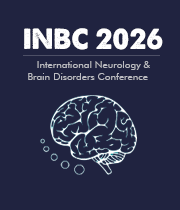Title : Faces, fantasies, and phantoms: A neurological case study on fregoli delusion, erotomania, and incubus syndrome
Abstract:
Objective: The study aims to present a rare case signifying the co-occurrence of Fregoli delusion, erotomania, and Incubus syndrome in a patient with schizophrenia, and to explore neurological dysfunctions contributing to these overlapping delusions.
Introduction: Fregoli syndrome is a delusional misidentification disorder in which a person believes that different people are a single individual in disguise. Neurologically, right hemisphere dysfunction is associated with it, which impairs facial recognition and memory processing. Erotomania, or de Clérambault's syndrome, involves the delusion that someone of higher status is in love with the patient. Schizophrenia is associated with erotomania and neurologically involves dysfunction of the limbic system and dopaminergic pathway regulating emotional attachment. The delusional idea that an invisible entity is approaching a female patient for sexual purposes is the hallmark of Incubus syndrome. It is linked to temporal lobe dysfunction and REM sleep disturbances. All three syndromes highlight right hemisphere impairments affecting facial recognition, emotional attachment, and reality perception.
Case Report: A 49-year-old female with a 13-year history of schizophrenia, medication non-adherence, and a family history of psychiatric illness, presented with deteriorating symptoms over the past three months. Her delusions included a belief that a famous Bollywood actor was in love with her, wanted to marry her, and communicated with her through dreams and secret messages. She also reported tactile hallucinations and claimed the actor engaged in sexual acts with her during sleep. Further, She experienced multifocal Fregoli delusions. She believed that her family members were disguised as hospital ward staff. Due to her medication non-adherence, a long-acting injectable antipsychotic treatment was considered. There was no significant history of memory problems and sleep dysfunction. Neurological examination was insignificant. 3D MRI brain, and electroencephalogram were normal. Polysomnography was not performed due to lack of Availability.
Conclusion: This case highlights the complex interplay between right hemisphere dysfunction, limbic system dysregulation, and temporal lobe abnormalities contributing to such complex presentation. The case also underscores the need for further research into the neurobiological mechanisms linking these rare psychiatric phenomena.




